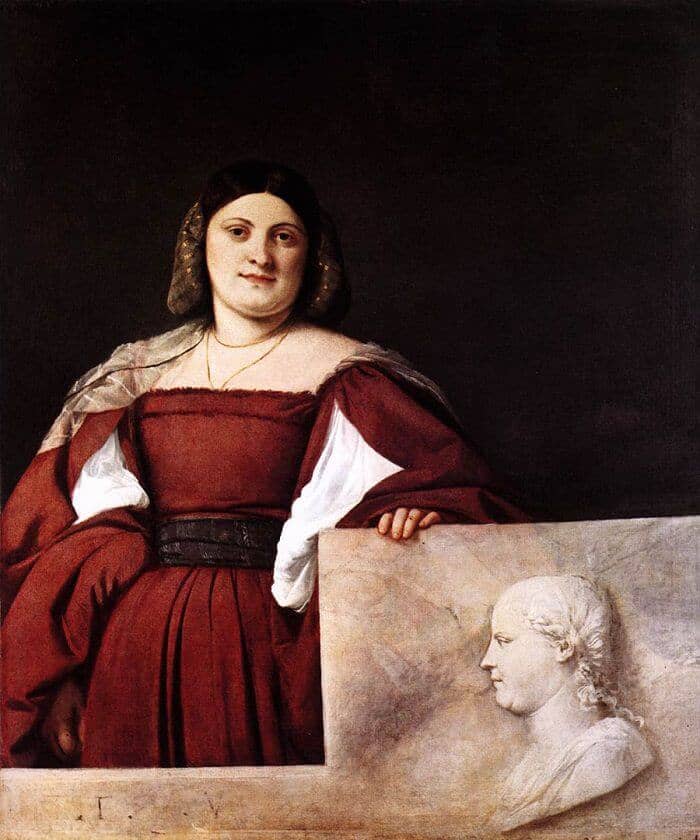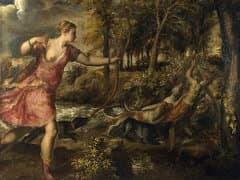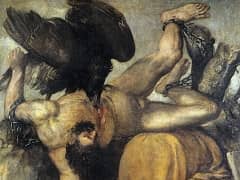Portrait of a Woman, 1510 by Titian

The appellation Portrait of a Woman (La Schiavona) originates in a letter of 1640, the earliest documentary reference to the portrait, and most likely represents a romantic response to the picture. The actual identity of the sitter is unknown, although she bears some resemblance to the heroine of the Paduan fresco of The Miracle of the Newborn Infant. Her fullness of form, so clearly stated in the broad oval simplicity of the head, establishes the tone of the composition both in its large-scale structure and in the definition of individual smaller formal components such as the folds and patterns of drapery. The expressive as well as physical gravity informing this figure, in combination with the direct gaze of her dark eyes, gives her an extraordinarily vital presence.
In the course of executing the portrait Titian worked actively with the design, modifying it in a number of important ways. At one point he had planned an oculus window opening in the upper right area, and originally both arms of the sitter were at her sides. With the decision to raise one side of the parapet Titian found a more organic solution to the problem of compositional contrapposto, creating not only an element to balance the off-center placement of the figure but also a greater degree of variation and interest in her pose. The red and blue veining of the marble surface reflects the disposition of colors in the earlier state of the composition; those two colors find their purest concentration in the small stones of the woman's rings, summarizing and serving as the source of the picture's basic chromatic structure.
The decision to raise the marble parapet is one of Titian's mos't imaginative responses to certain inherited traditions of portraiture. Functioning as a deliberately ambiguous barrier between the observer and the Active world of the picture, the parapet was a favorite device in earlier Renaissance portraiture; as the sitter reached beyond it by gesture or glance, a line of communication, a means of access, was opened to the viewer. Seen in nearly three-quarter length, "La Schiavona," however, assumes a somewhat less intimate and more distant position, and Titian seems to have been interested in exploring even further these implications of monumentality. By raising the parapet he reinforced its function as barrier, and he made explicit its implicit identity with the picture plane by turning it into a pictorial field of its own.















